- No products in the cart.
Haylefloks tab n / 500mg film about 5 pc
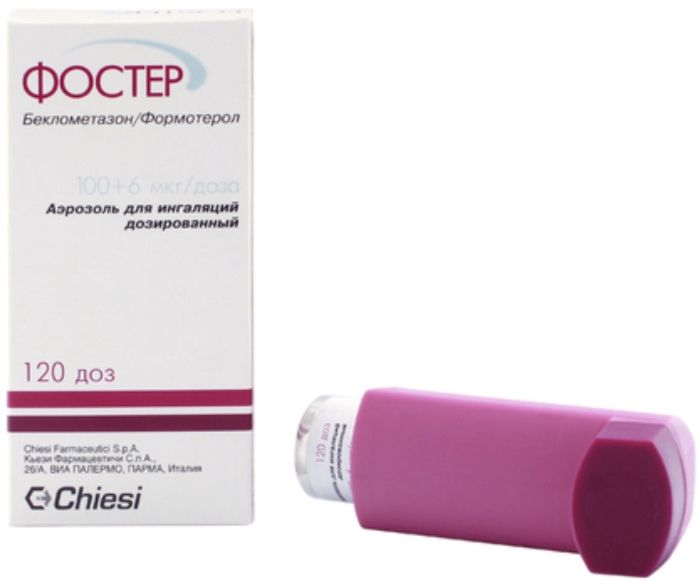
Foster spray ing. scrapper. 6mkg + 0.1mg / dose 120doz
$50.90
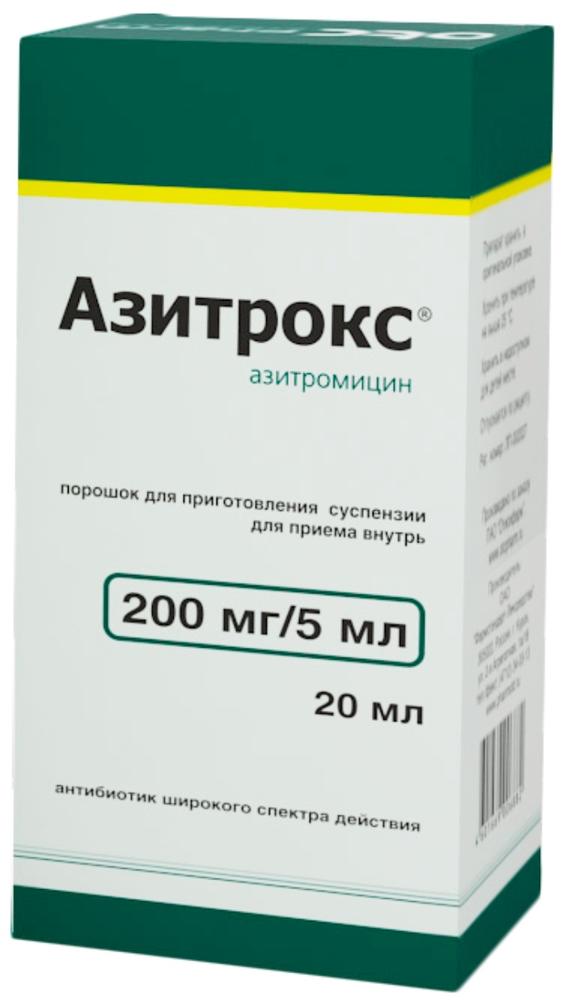
Azitroks prig.susp.dlya powder for oral 200mg / 5ml vial 15.9g one piece with the measuring spoon and a pipette
$7.09
$8.38
Haylefloks tab n / 500mg film about 5 pc
SKU: 1194809407 Categories: Antibacterial, Antibiotics, antimicrobial, antiparasitic, Medicaments Tags: HAYGLANS, levofloxacin
Description
Composition
Active substance:
Levofloxacin hemihydrate, the equivalent of 250 mg, or 500 mg, or 750 mg of levofloxacin.
Excipients:
Corn starch, microcrystalline cellulose, povidone K30, methyl parahydroxybenzoate, propyl parahydroxybenzoate, talc purified, magnesium stearate, sodium carboxymethyl starch.
sheath: hypromellose, talc purified, macrogol 6000, titanium dioxide, dye sunset yellow.
Description:
Oval biconvex tablets, film-coated from light orange to orange in color, with the notch on one side.
At the turn of the core from the white with a yellow tinge to the yellow color.
Product form:
Film-coated tablets of 250 mg, 500 mg, 750 mg.
The dosage of 250 mg of 3, 5 or 10 tablets in a blister made of PVC / aluminum.
1 or 10 blisters with instructions for use in a cardboard pack.
2 blisters of 5 tablets with instructions for use in a cardboard pack.
For hospitals: 100, 500 or 1000 tablets in a package of PVC bag with instructions for use in a bank of high-density polyethylene.
Dosages of 500 mg, 750 mg: 5, 7, or 10 tablets in a blister made of PVC / aluminum.
1 or 10 blisters with instructions for use in a cardboard pack.
2 blisters of 5 tablets with instructions for use in a cardboard pack.
For hospitals: 100, 500 or 1000 tablets in a package of PVC bag with instructions for use in a bank of high-density polyethylene.
Contraindications
Hypersensitivity to levofoksatsinu, other fluoroquinolone or other components of the drug history; epilepsy; tendon lesions associated with receiving quinolones in history; childhood and adolescence to 18 years; pregnancy; lactation.
Carefully
Increasing age (high probability of having a concomitant reduction in renal function); deficiency of glucose-6-phosphate dehydrogenase.
Indications
Infectious inflammatory disease of mild to moderate severity caused by sensitive microorganisms: lower respiratory tract infections (pneumonia, exacerbation of chronic bronchitis); acute bacterial sinusitis; infections of the urinary tract infections and kidney (including acute pyelonephritis); Skin and soft tissue infections (atheroma festering, abscesses, boils); chronic bacterial prostatitis; intra-abdominal infections (in combination with antibacterial agents acting on the anaerobic microflora); tuberculosis (in the complex therapy of drug-resistant forms).
Interaction with other drugs
Levofloxacin increases the half-life of cyclosporin.
levofloxacin Effect reduce drugs that inhibit intestinal motility, sucralfate, aluminum or magnesium-containing antacid drugs and iron preparations.
Nonsteroidal anti-inflammatory drugs and theophylline, while the use of levofloxacin increase the risk of seizures in susceptible patients, corticosteroids increase the risk of tendon rupture.
When simultaneous administration of levofloxacin with hypoglycemic drugs to changes in blood glucose levels, including hyperglycemia and hypoglycemia.
Levofloxacin enhances the effect of warfarin.
Cimetidine and drugs that block tubular secretion slow excretion of levofloxacin.
Overdose
Symptoms include nausea, erosive lesions of the mucous membranes of the gastrointestinal tract, lengthening the interval Q-T, confusion, dizziness, seizures.
Treatment: gastric lavage, if necessary – symptomatic therapy. There is no specific antidote, dialysis is ineffective.
pharmachologic effect
Pharmacological group:
The antimicrobial agent – fluoroquinolone.
Pharmacodynamics:
Levofloxacin – a synthetic broad-spectrum fluoroquinolone. Inhibit DNA gyrase (topoisomerase II) and topoisomerase IV, and crosslinking gives supercoiling of DNA breaks, inhibits DNA synthesis, causes profound morphological change in the cytoplasm, the cell wall and membranes of sensitive microbes.
Levofloxacin is effective against most strains of the following microorganisms:
Aerobic gram-positive microorganisms: Corynebacterium diphtheriae, Enterococcus spp. (Including Enterococcus faecalis), Listeria monocytogenes, Staphylococcus spp. (Leykotoksinsoderzhaschie and coagulase metitsillinchuvstvitelnye / moderately sensitive strains, including strains metitsillinchuvstvitelnye Staphylococcus aureus, Staphylococcus epidermidis, Streptococcus spp. (Including strains of Streptococcus group C and G, Streptococcus agalactiae, Streptococcus pyogenes, penitsillinchuvstvitelnye / moderately sensitive / resistant strains of Streptococcus pneumoniae, penitsillinchuvstvitelnye / resistant strains of Streptococcus group viridans).
Aerobic gram-negative microorganisms: Acinetobacter spp. (Including Acinetobacter baumanii), Actinobacillus actinomycetemcomitans, Citrobacter freundii, Eikenella corrodens, Enterobacter spp. (Including Enterobacter aerogenes, Enterobacter agglomerans, Enterobacter cloacae), Escherichia coli, Gardnerella vaginalis, Haemophilus spp. (Including Haemophilus ducreyi, Haemophilus parainfluenzae, ampicillin-sensitive / resistant strains of Haemophilus influenzae), Helicobacter pylori, Klebsiella spp. (Including Klebsiella oxytoca, Klebsiella pneumoniae), Moraxela catarrhalis (and producing no-producing beta-lactamase strains), Morganella morganii, Neisseria spp. (Including Neisseria meningitidis, and producing no penicillinase producing strains of Neisseria gonorroeae), Pasteurella spp. (Including Pasteurella conis, Pasteurella dagmatis, Pasteurella multocida), Proteus spp. (Including Proteus mirabilis, Proteus vulgaris), Providencia spp. (Including Providencia rettgeri, Providencia stuartii), Pseudomonas spp. (Including Pseudomonas aeruginosa), Serratia spp. (Including Serratia marcescens), Salmonella spp.
Anaerobic microorganisms: Bacteroides fragilis, Bifidobacterium spp, Clostridium perfringens, Fusobacterium spp, Peptostreptococcus spp, Propionibacterum spp, Veilonella spp…..
Other microorganisms: Bartonella spp, Chlamydia spp.. (Including Chlamydia pneumoniae, Chlamydia psittaci, Chlamydia trachomatis), Legionella pneumophila, Mycobacterium spp. (Including Mycobacterium leprae, Mycobacterium tuberculosis), Mycoplasma spp. (Including Mycoplasma hominis, Mycoplasma pneumoniae), Rickettsia spp., Ureaplasma urealyticum.
Resistant microorganisms:
Aerobic gram-positive microorganisms: Corynebacterium jeikeium, Staphylococcus spp. (Methicillin-resistant coagulase strains, including strains of methicillin-resistant Staphylococcus aureus).
Aerobic gram-negative microorganisms: Alcaligenes xylosoxidans.
Other micro-organisms: Mycobacterium avium.
Pharmacokinetics:
Absorption: After oral administration of levofloxacin is rapidly and almost completely absorbed from the gastrointestinal tract. Food intake has little effect on the speed and completeness of absorption. Bioavailability – 99%. Maximum plasma concentration is achieved in 1-2 hours for dose of levofloxacin 250 mg, 500 mg and 750 is equal to 2.8 ug / ml, 5.2 ug / ml and 8.0 ug / ml, respectively.
Distribution: Following administration of a single dose or multiple dose absorbed drug amount directly proportional to the dose. The equilibrium concentration in plasma is reached after 48 hours. The mean volume of distribution of levofloxacin ranges from 74 to 112 liters. Plasma protein binding of 30-40%. It penetrates the tissues and organs: lungs, bronchial mucosa, sputum, alveolar macrophages (concentration in lung tissues 2-5 times higher than the concentration in plasma), the organs of the urogenital system, polymorphonuclear leukocytes.
Metabolism: Levofloxacin undergoes limited hepatic metabolism (oxidation and / or deacetylation).
Excretion: Report from the body mainly by the kidneys by glomerular filtration and tubular secretion. The half-life of levofloxacin -. 6-8 hours Less than 5% of the dose is excreted as desmetil- and N-oxide metabolites. In unaltered kidneys displayed 70% of an oral dose for 24 hours and 87% -. 48 hours 4% of an oral dose is excreted in the intestine within 72 hours.
Conditions of supply of pharmacies
On prescription.
side effects
From the nervous system: headache, dizziness, weakness, drowsiness, insomnia, tremor, anxiety, paresthesia, anxiety, hallucinations, confusion, depression, movement disorders, convulsions.
From the senses: blurred vision, hearing, smell, taste and tactile sensitivity.
Since the cardiovascular system: reduction in blood pressure, cardiovascular collapse, tachycardia, lengthening the interval Q-T, atrial fibrillation.
From the digestive system: nausea, vomiting, diarrhea (including blood), digestion disorders, loss of appetite, abdominal pain, pseudomembranous colitis; increased activity of “liver” transaminases, hyperbilirubinemia, hepatitis, dysbiosis.
Metabolism: hypoglycemia (increased appetite, sweating, tremors, nervousness).
On the part of the musculoskeletal system: arthralgia, muscle weakness, myalgia, rhabdomyolysis, tendon rupture, tendonitis.
From the urinary system: hypercreatininemia, interstitial nephritis, acute renal failure.
From the side of hematopoiesis: eosinophilia, hemolytic anemia, leukopenia, neutropenia, agranulocytosis, thrombocytopenia, pancytopenia, hemorrhage.
Allergic reactions include itching and redness of the skin, swelling of the skin and mucous membranes, urticaria, malignant exudative erythema (Stevens-Johnson syndrome), toxic epidermal necrolysis (Lyell’s syndrome), bronchospasm, asthma, anaphylactic shock, allergic pneumonitis, vasculitis.
Others: photosensitivity, fatigue, aggravation of porphyria, persistent fever, development of superinfection.
special instructions
After normalization of body temperature, it is recommended to continue treatment for at least 48-72 hours.
Levofloxacin take at least 2 hours before or 2 hours after ingestion of antacids magnesium / aluminum, or sucralfate, or other preparations containing calcium, iron or zinc.
Because of possible photosensitivity during treatment and for 5 days after treatment with levofloxacin must avoid sunlight and artificial UV irradiation. With the development of phototoxic drug treatment should be discontinued.
If signs of tendinitis and pseudomembranous colitis levofloxacin immediately overturned.
It should be borne in mind that in patients with brain damage in history (stroke, major trauma) may develop seizures.
At insufficiency of glucose-6-phosphate dehydrogenase possible risk of hemolytic reaction.
Patients with diabetes mellitus during treatment with levofloxacin should carefully monitor the level of glucose in the blood.
With the simultaneous use of warfarin and levofloxacin shows monitoring of the prothrombin time, international normalized ratio or other anticoagulant tests, and monitoring signs of bleeding.
In patients receiving levofloxacin may be disturbed patient’s ability to concentrate and speed of psychomotor reactions. Therefore, caution should be exercised when driving and occupation of other potentially hazardous activities.
Storage conditions
Stored in a dry place at a temperature not higher than 25 ° C. Keep out of the reach of children.
Dosing and Administration
Inside, before meals or in between meals, without chewing, with a sufficient amount of water.
Adult patients with normal renal function (creatinine clearance greater than 50 mL / min) used in accordance with the information provided:
Community-acquired pneumonia 1-2 times a day, 7-14 days
Acute bacterial exacerbation of chronic bronchitis, 1 time a day, 7 days
Acute bacterial sinusitis 1 time per day, 10-14 days
Uncomplicated infections of the skin and subcutaneous tissue 1 times a day, 7-10 days
Chronic bacterial prostatitis 1 times a day, 28 days
Intra-abdominal infections (in combination with antibacterial agents acting on the anaerobic microflora) 1 time per day, days 7-14
Tuberculosis (in the complex therapy of drug-resistant forms) 1 time per day up to 3 months
Adjusting the dose of levofloxacin in adult patients with impaired renal function (creatinine clearance less than 50 mL / min)
Creatinine clearance from 20 to 49 ml / min – 500 mg initial dose, followed by 250 mg every 24 hours
Creatinine clearance of 10 to 19 ml / min – 500 mg initial dose, followed by 250 mg every 48 hours
creatinine clearance less than 10 mL / min, including hemodialysis or chronic ambulatory peritoneal dialysis – 500 mg initial dose, followed by 250 mg every 48 hours
If abnormal liver function a dose adjustment is not required, since volume levofloxacin metabolism in the liver is limited.
Information
Appearance may differ from that depicted in the picture. There are contraindications. You need to read the manual or consult with a specialist
Additional information
| Weight | 0.100 kg |
|---|---|
| Manufacturer | HAYGLANS |

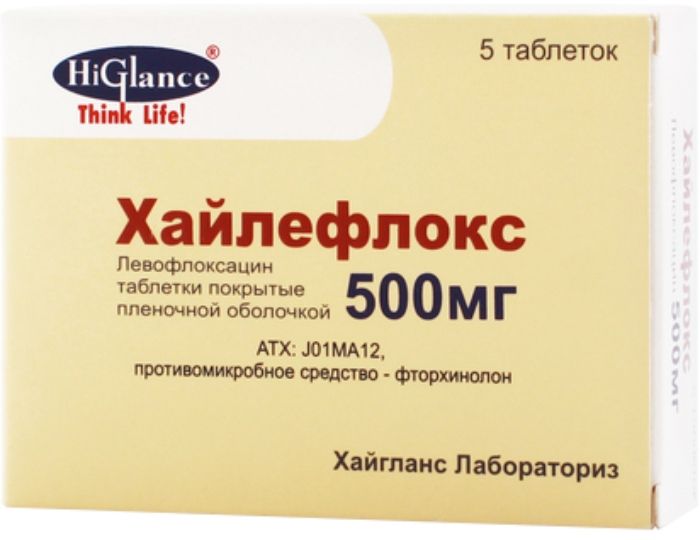

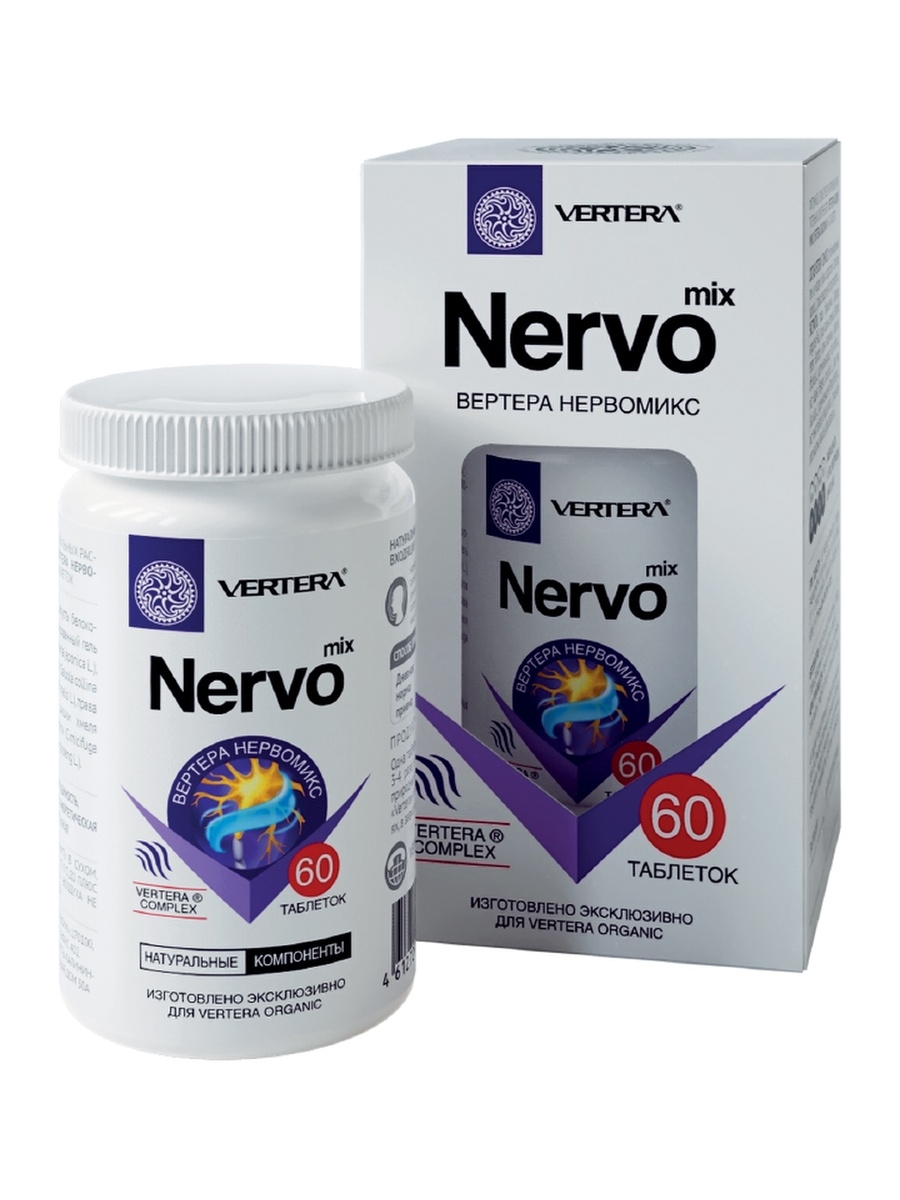


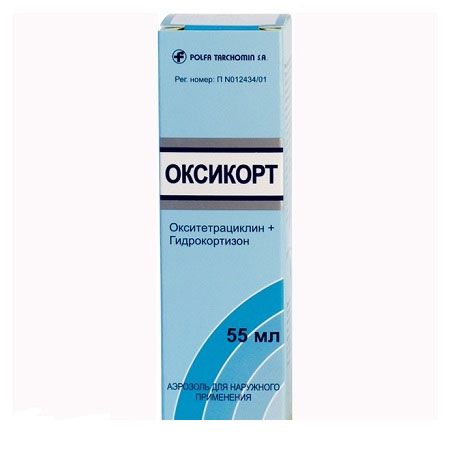




There are no reviews yet.